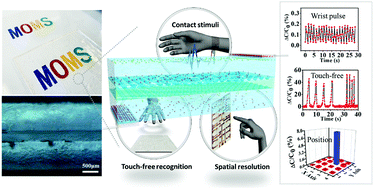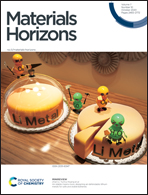A dual-trigger-mode ionic hydrogel sensor for contact or contactless motion recognition†
Abstract
The intelligent flexible sensors with high responsivity and detectivity are highly desired for wearable devices and human–machine interfaces (HMI). However, the existing sensors are usually limited to onefold detection performance in either contact or noncontact mode. Here, a sandwiched hydrogel capacitive system is designed to fabricate a multi-operational-mode ionic sensor (MOMS) that simultaneously recognizes mechanical stimuli and remote gestures. The novel MOMS performs satisfying sensitivity (1.7 gauge factor and 3.3 Pa−1 pressure sensitivity), rapid response for contactless gesture recognition, a quite wide working range (up to 100 kPa and 300% elongation) and a good touch-free operating distance (40 mm). Moreover, the spatial resolution of the structured sensor array meets the accurate positioning requirements under both contact and touch-free conditions. This is the first time that a capacitive hydrogel system exhibited outstanding performance in detecting contact stimuli and noncontact hand motions at the same time. Hence, the MOMS will allow significant advances in intelligent detection techniques and facilitate innovative thinking for the applications of synchronous monitoring devices.

- This article is part of the themed collection: Horizons Community Board Collection: Biosensors


 Please wait while we load your content...
Please wait while we load your content...